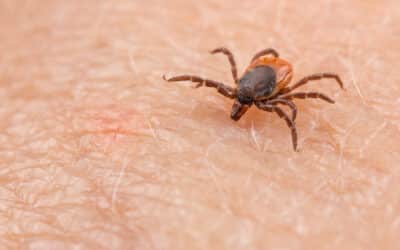
Pest Identification: House Fly
House flies are distinguishable by four dark stripes on their thorax, with sizes ranging between 1/8 and 1/4 of an inch. They possess specialized mouthparts designed for absorbing liquids, as they cannot consume solid food in its original form. To feed on solids, they first deposit regurgitated saliva, transforming the solid into a liquid form for ingestion. This feeding mechanism requires them to intake water frequently to compensate for their constant salivation and liquid waste excretion, evidenced by the specks often found on surfaces.
House fly reproduction involves laying eggs in decaying organic materials, with a preference for horse manure. A single female can lay between 100 and 150 eggs, which hatch more rapidly in higher temperatures. The emerging larvae, or maggots, experience three stages of molting before transitioning into adulthood through pupation. Adults mate shortly after their emergence, completing their life cycle from egg to adult in as little as one week, though three weeks is typical. Adult house flies have a lifespan of up to 2.5 weeks during summer, potentially extending to three months in cooler conditions. Although they usually stay within a half to two miles from their origin, they can venture up to 20 miles in search of food and breeding sites.
Noteworthy aspects of house flies include their liquid diet, the ability to taste with their feet, a propensity for frequent defecation, and a risk of spreading harmful bacteria such as Salmonella and E. coli. Their climbing prowess is facilitated by sticky foot pads, and their compound eyes offer a nearly 360-degree field of vision, enhancing their survival through quick reactions and specialized vision for males in pursuing potential mates. Despite their brief lifespan, house flies are prolific breeders, capable of laying up to 500 eggs in their lifetime, underscoring the potential for rapid population growth.
Regarding pest control, house flies are often indicative of poor sanitation. Effective management requires identifying and eliminating breeding sources. It is essential to prevent the accumulation of potential breeding materials such as manure, garbage, and other decaying organic matter. Maintaining cleanliness and securing trash cans with tight lids can significantly reduce fly populations. Care should be taken when cleaning trash receptacles to avoid contaminating soil with organic matter, which can serve as a breeding ground. For severe infestations, it may be necessary to dry out or securely dispose of maggot-infested garbage to prevent further breeding, emphasizing the importance of sanitation in controlling house fly populations.


"Very efficient, used safety practices, kept me informed, exceptional professional."
-E. Kruczek

"We are very happy & satisfied with our technician."
-D. Auger

"We are very happy with your service. We will be ongoing customers."
-B & J. Douty
The best service starts here.
We’re the most trusted pest control and lawn care company in Central Massachusetts. But don’t take our word for it. Read real reviews from happy customers. Then call us and join our growing list of residents, families, and businesses who depend on Ford’s Hometown Services to protect what matters most.
Buzzwords
Mastering Carpenter Ant Pest Control: Tips from the Experts
There are ants — and then there are carpenter ants. If you see one, you’ll know. Not only are they among the largest ants in the U.S., they can be quite destructive. Keep reading to discover important information about carpenter ants, including how to spot them, how...
Understanding Tick Behavior: Strategies for Long-Term Pest Control
Do you hate ticks? You’re not alone. A recent study by the National Pest Management Association found that 1 in 3 Americans are concerned about being bitten by bloodsucking pests like mosquitoes, ticks, and bed bugs. And for good reason — tick-borne diseases are on...
The Silent Destroyers: A Comprehensive Guide to Termite Pest Control
Everyone has heard the saying that termites have been around since the time of the dinosaurs. It’s true. Termites date back more than 120 million years! To say they are hard to kill is an understatement. That’s why taking termite pest control seriously is critical for...










